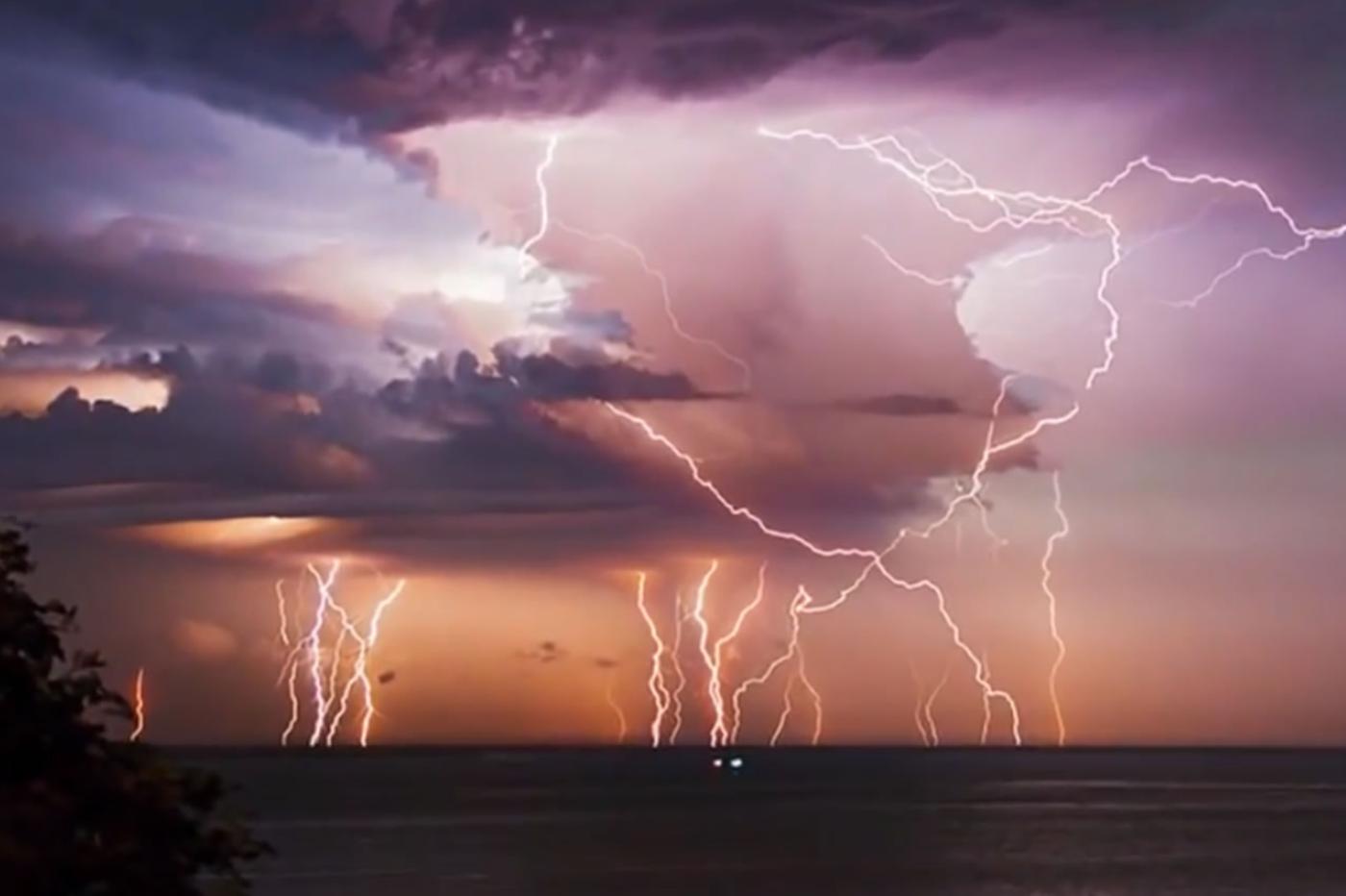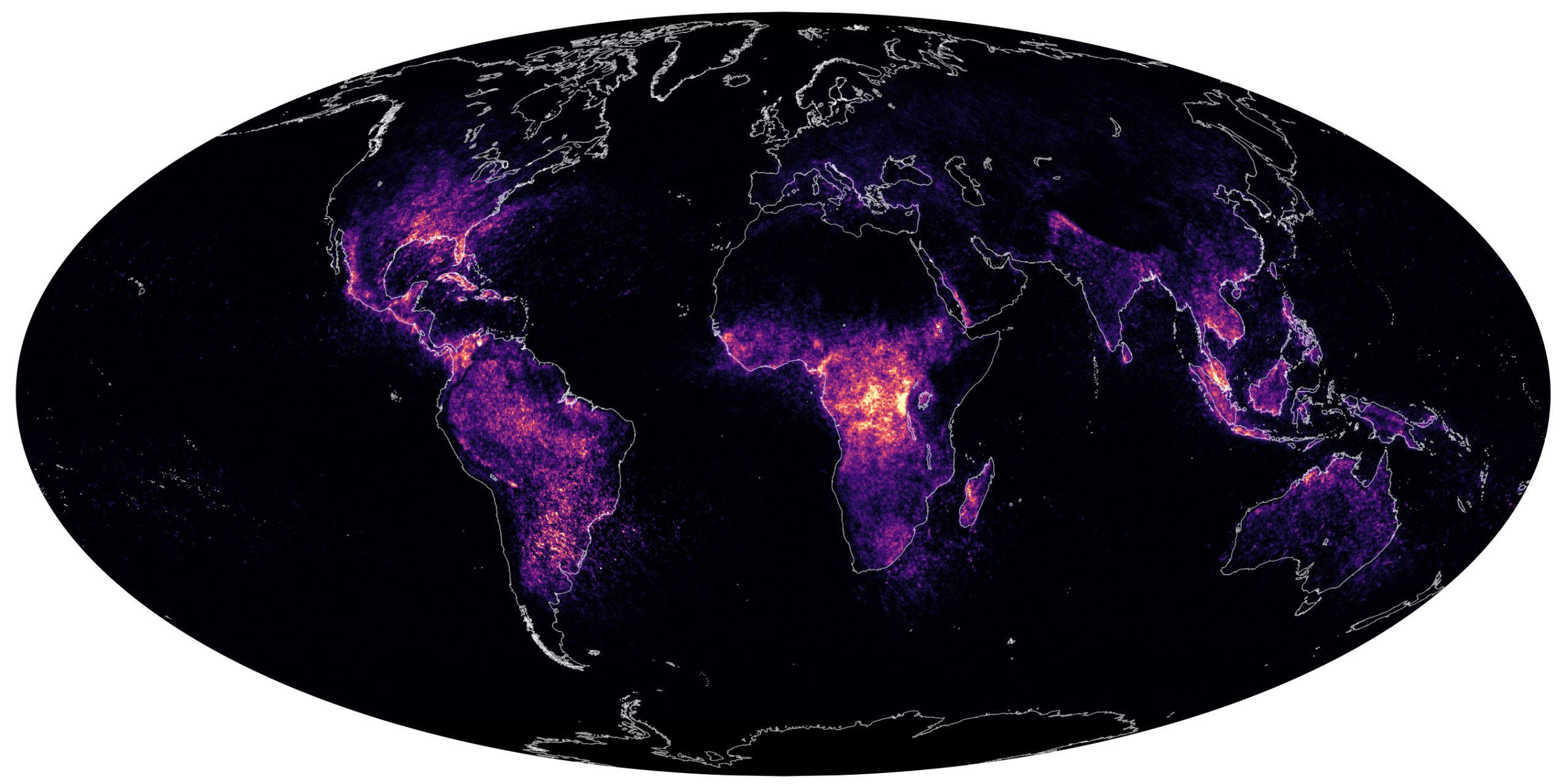
Lightning isn’t just awesome, it’s also very important to climate dynamics, so NASA equipped the ISS to track it.
Lightning is a phenomenon that has fascinated humans since the dawn of time. It is found everywhere in different mythologies, where it is often likened to a manifestation of the wrath of the Gods. But science has come a long way since the Greeks erected the first temples to Zeus, and today lightning is primarily the specialty of meteorologists. For its image of the day on January 11, NASA has also chosen a map of lightning on Earth which crowns more than thirty years of research on lightning carried out from the ISS.
Indeed, since 1990, NASA has had two satellites equipped with instruments called Lightning Image Sensor (LIS) and Optical Transient Detector. Conceptually, their objective is exactly the same: to map all the lightning that passes through their field of vision with fearsome precision. An arsenal which has already allowed them to have a fairly precise idea of the distribution of these phenomena on Earth.

The ISS to the rescue
But since 2017, the agency’s astronomers have had a new toy: a second new generation LIS, this time mounted on board the International Space Station. It is much more precise than its elder, and the data it offered to NASA even made it possible to clarify certain ambiguous data retroactively.
This allowed them to map lightning across the entire globe since 1990, from the Canadian Far North to the depths of Patagonia. This is a considerable advance over previous techniques. Indeed, the previous instruments were very efficient between the tropics and the equator, but became too imprecise to produce usable results near the poles.
Another major progress: the LIS of the ISS is capable of shooting the portrait at any flash, including those that never reach the ground. They can be horizontal flashes or strike entirely within a cloud, which traditionally makes them more difficult to detect.
Lightning, an “essential climate variable”
This new ability to analyze these phenomena from space has also enabled meteorologists to focus on particularly impressive phenomena, called megaflashes. These are huge lightning bolts that can rip through the sky for hundreds of kilometers and for more than ten seconds, compared to a few microseconds for a standard lightning bolt. But contrary to what one might think, they are difficult to study without a specialized instrument like the latest generation LIS. The latter therefore makes it possible to not miss any of these rare phenomena, in order to try to understand what causes these natural discharges.
At present, researchers are still compiling and filtering this immense amount of data. On the other hand, they are hopeful that this work will one day make it possible to understand the mysterious link between climate change and thunder. If this is not necessarily a priority in our fight to safeguard our living environment, it is still a significant factor that must be kept in mind.
Indeed, the intense discharge of energy that occurs during a flash can shatter the nitrogen atoms of the atmosphere. Thanks to the surrounding oxygen, they can then form nitrogen dioxide, a problematic air pollutant. But it also plays a role in the nitrogen cycle essential to biodiversity. It also participates in producing ozone which protects us from the devastating radiation of the Sun. Findings that prompted the World Meteorological Agency to add lightning to its list of “essential climate variables”, and which will therefore be all the more important to monitor in the future.



